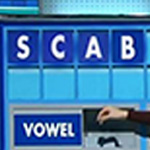
Type Is Alive
Before the SCA, I never really thought about the typeface that I used. I avoided ‘Arial’ because, to me, it was hideous, but I found myself just choosing a font on a whim. If I felt super professional, I would use ‘Times New Roman.’ If I felt elegant, I would use ‘EB Garamond.’ Looking back, I guess that font had always spoken to me in a way that I did not give much attention.
Ian’s masterclasses throughout the first term had already brought the typeface part of my brain alive. I became aware of the story, tone of voice, and personality that a font could bring to any piece of art or writing. Font is communication — how you use it, what you say with it — all has a way of leaving a different impression on each reader. Typeface is an art, a craft, and we have a duty to keep the craft alive. Marc also pushes this message — calling art without meaning decoration. We, as creatives, are not simply here to create art that looks visually appealing; we are here to communicate, and thus every element must be taken into consideration. There is no small part or element in communication; each aspect has a purpose. With this knowledge, I looked forward to Dalton Maag’s Zeynep Akay’s masterclass titled: ‘How to make a typeface.’
I had previously tried — and failed — to manipulate fonts and play with vectors on Illustrator. I found it taxing and not enjoyable, but Zeynep put a different spin on it that made it not feel like a chore but a hobby. It was also nice because she spoke about the process of developing a typeface; she went through how she and her colleagues spent a good chunk of the initial development stage on paper. Being a tech-design company, I assumed that most of the work was focused on technology, but a lot of the drafts were hand-drawn — and a good chunk of it is usually scrapped. It is always nice and reassuring to hear that those who are the best in their field still have to go through the same struggles we face as junior creatives. It also shows that the message of iteration drummed into us is for a reason — the more you iterate, the more your idea develops into its best self, as do you, the creator.
The name of the talk was ‘How To Make a Typeface.’ As such, she shared some aspects of that process:
- Design drafts: Draw inspiration from various sources — historical typefaces, cultural elements, or personal creativity. Then sketch rough drafts of letterforms, experimenting with different shapes, proportions, and styles to bring their ideas to life on paper.
- Design concepts: Transform sketches into digital drafts, exploring letterforms, and experiment with variations in curves, serifs, and overall aesthetics.
- Refine the concept: Seek feedback from peers or clients, and make adjustments to enhance the overall quality and meet specific design objectives.
- Execute: Digitize the typeface — create vector-based versions of each letterform including a character set (uppercase and lowercase letters, numerals, punctuation, and special characters.)
- Engineer: Refine the spacing between letters (kerning) and character spacing (tracking) for better readability and visual harmony.
- Final Delivery: Provide documentation detailing usage instructions, character set information, and any unique features or considerations for the typeface.
The talk was really interesting and it was lovely getting an additional deep-dive into the world of typography. I do not know how I feel about doing it myself, but I definitely appreciate the craft that goes into bringing type alive.











